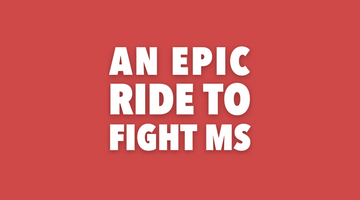In Australia, it is mandated by law that all public spaces should be inclusive and accessible to individuals with disabilities, as stipulated by the Disability Discrimination Act. This requirement extends to both existing structures and those currently under construction.
Organisations are obliged under the Disability Discrimination Act to make necessary modifications to their premises to ensure accessibility for individuals with disabilities. This includes considering a spectrum of disabilities, including mobility impairments, vision impairments, and hearing impairments.
For example, it may constitute discriminatory practice if a person with a mobility impairment reliant on a wheelchair cannot access a building due to the sole entrance being via stairs.
The Disability Discrimination Act (DDA) makes it against the law for public places to be inaccessible to people with a disability.
Places used by the public include but are not limited to:
- Public footpaths and walkways
- Educational institutions
- Shops and department stores
- Banks, credit unions, building societies
- Parks, public swimming pools, public toilets, and pedestrian malls
- Cafes, restaurants, pubs
- Theatres and other places of entertainment
- Libraries
- Sporting venues
- Social and sporting clubs
- Government offices
- Public transport including trains, buses, ferries, boats, ships and planes
- Dentists’ and doctors’ surgeries
- Hospitals
In an era striving for inclusivity, the importance of creating spaces that cater to the needs of all individuals, including those with special needs, cannot be overstated. Not only fo accessibility products play a pivotal role in transforming public spaces into welcoming and accommodating experiences, but it is also a requirement by law. From tactile indicators to wheelchair ramps, these products not only facilitate ease of movement but also foster a sense of independence and empowerment for customers or residents with diverse abilities.
At eSafety, our commitment lies in offering a diverse range of products designed to elevate accessibility across all public spaces. Whether it’s within busy shopping centres, restaurants, corporate hubs, schools, sports venues, libraries, theatres, or even your own private property, we specialise in the supply of products that enhance accessibility for all.
Our expertise includes understanding your space’s unique requirements. Through comprehensive assessments, we can make recommendations to ensure the best solutions for your specific needs. Here are a few of our most popular accessibility products.
Tactile Indicators
Tactile indicators are tactile paving surfaces designed to aid visually impaired individuals in navigating public spaces. They typically consist of raised patterns or textures on surfaces like footpaths, train platforms, or pedestrian crossings. These indicators serve as cues, signalling changes in pathways, crossings, or potential hazards. These tactile cues provide invaluable guidance, allowing individuals with visual impairments to navigate unfamiliar environments with greater confidence and safety.
Browse our Tactile Indicator Products

Braille Signs
Braille signs are an essential component of an inclusive environment. These signs feature raised dots in the Braille system, allowing individuals with visual impairments to read information independently. From restroom signs to room labels and directional signs, integrating Braille into signage ensures that crucial information is accessible to all, fostering independence and enabling individuals to navigate spaces with autonomy.

Wall and Corner Guards
Inclusive design also involves mitigating physical hazards within a space. Wall and corner guards serve a dual purpose by protecting both the structure and individuals within a space. These guards, typically made of durable materials such as rubber or plastic, are installed along walls and corners to prevent injuries caused by accidental collisions. By creating a cushioned barrier, they contribute to a safer environment, particularly for individuals with mobility aids like canes, walkers, or wheelchairs.

Wheelchair Ramps
Perhaps one of the most recognisable accessibility features, wheelchair ramps are integral for enabling seamless movement for individuals using mobility devices. These ramps provide an alternative to stairs, allowing wheelchair users, individuals with walkers, or those with limited mobility to access buildings, public spaces, and facilities without barriers. Ramps come in various designs, including permanent installations and portable options, ensuring flexibility in addressing diverse accessibility needs.
Browse our range of Wheel Chair Ramps

The integration of accessibility products is pivotal in fostering inclusive environments. Tactile indicators and Braille signs cater to the needs of individuals with visual impairments, providing crucial information and navigational aids. Wall and corner guards mitigate physical hazards, contributing to a safer space for everyone. Meanwhile, wheelchair ramps are indispensable in ensuring unhindered access for individuals using mobility devices.
Together, these products show your customers and patrons a commitment to creating spaces that prioritise inclusivity, and safety and empower individuals of all abilities to navigate and participate fully in their surroundings.
For comprehensive safety products and solutions tailored to your needs, reach out to eSafety to create a more inclusive environment in your space.








